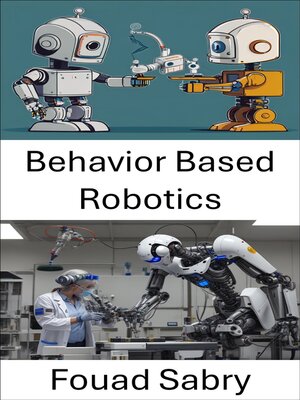Behavior Based Robotics
ebook ∣ Designing Intelligent Systems for Adaptive Learning and Interaction · Robotics Science
By Fouad Sabry

Sign up to save your library
With an OverDrive account, you can save your favorite libraries for at-a-glance information about availability. Find out more about OverDrive accounts.
Find this title in Libby, the library reading app by OverDrive.



Search for a digital library with this title
Title found at these libraries:
| Library Name | Distance |
|---|---|
| Loading... |
1: Behaviorbased robotics: Introduces the principles that guide behavior based systems in robotics.
2: Subsumption architecture: Explores a layered architecture for building complex robotic behaviors.
3: BEAM robotics: Discusses simple, efficient robots designed to mimic biological behaviors.
4: Bioinspired computing: Examines how biological systems inspire computational approaches in robotics.
5: Luc Steels: Highlights contributions to robotics and language evolution from this key researcher.
6: Social simulation: Investigates how social interactions among agents inform behaviorbased designs.
7: Rodney Brooks: Covers the revolutionary ideas brought forth by this pioneer in robotics.
8: Simultaneous localization and mapping: Explains methods for a robot to navigate and map environments.
9: Multiagent system: Discusses systems where multiple robots interact and collaborate.
10: Physical symbol system: Explores how physical entities can manipulate symbols for problemsolving.
11: Modelbased reasoning: Analyzes reasoning processes in robots using internal models of the environment.
12: Intelligent agent: Defines agents capable of autonomous action in dynamic environments.
13: Embodied cognitive science: Connects physical embodiment and cognitive processes in robotics.
14: Nouvelle AI: Introduces new artificial intelligence approaches influencing behaviorbased robotics.
15: Activity recognition: Discusses techniques for robots to recognize and respond to human activities.
16: Apprenticeship learning: Explores how robots can learn from observing others.
17: Situated approach (artificial intelligence): Emphasizes the importance of context in AI decisionmaking.
18: Winnertakeall in action selection: Explains decisionmaking processes in competitive environments.
19: Elmer and Elsie (robots): Case study of specific robots showcasing behaviorbased principles.
20: Symbolic artificial intelligence: Examines the role of symbols in the cognitive abilities of robots.
21: Decentralised system: Discusses the advantages of decentralized architectures in robotic systems.







